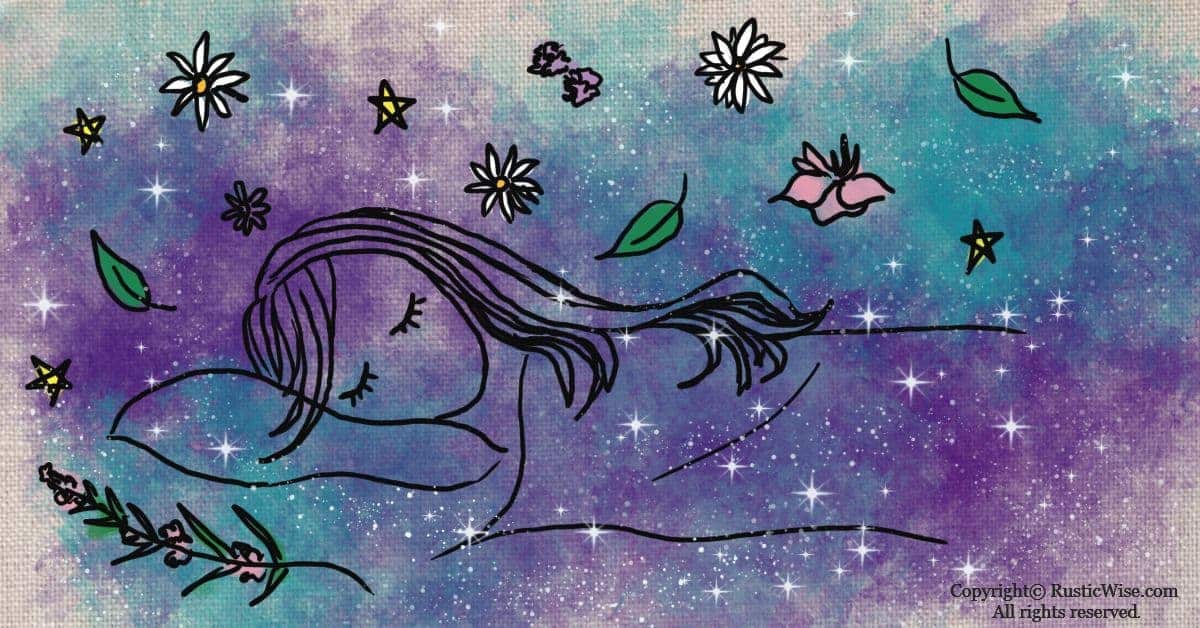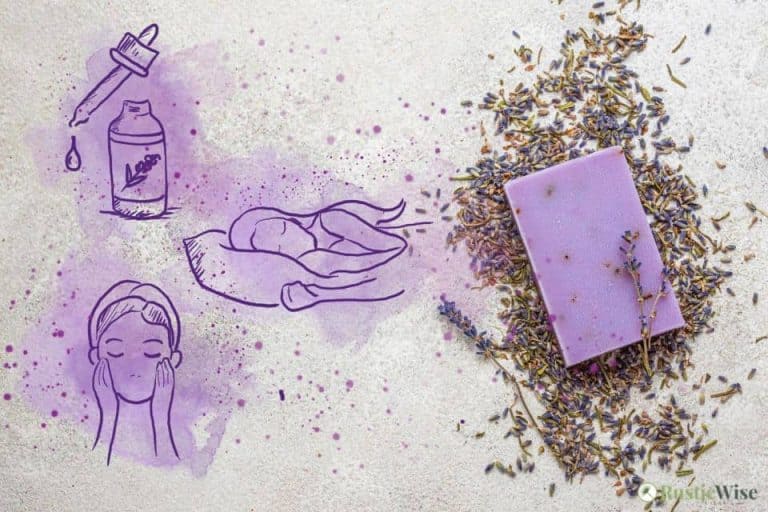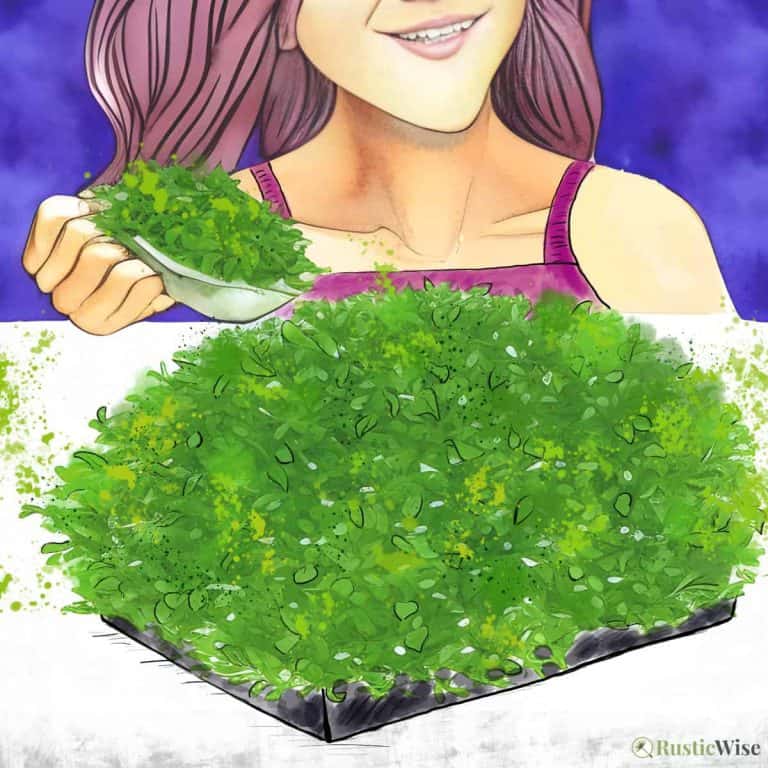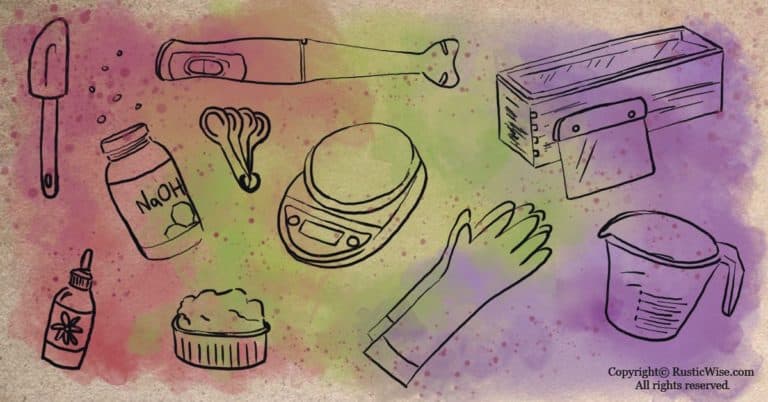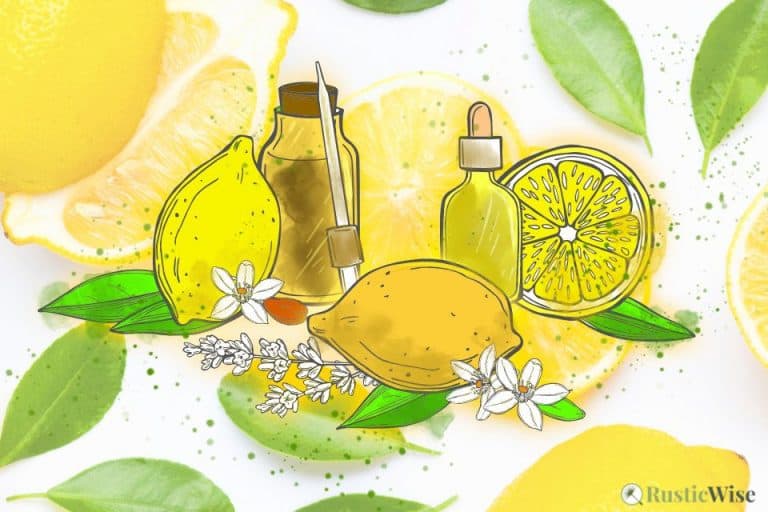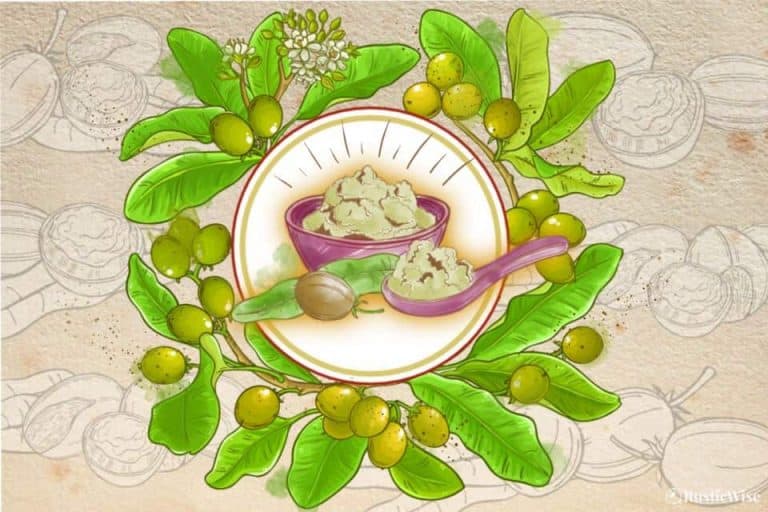Best Dream Pillow Herbs To Use in Your DIY Sleep Pillow
Long before there were sleeping pills, people relied on the natural soothing properties of herbs and flowers to promote a peaceful rest. A dream pillow is simply a pillow or sachet filled with a combination of dried herbs and flowers—its relaxing fragrances are used to lull you into a deep slumber. We’ll go over a few of the best dream pillow herbs to make your own easy DIY project. We’ll also share four different herb combinations you can try out.
Keep reading for more information on dream pillow herbs, their benefits, and how to make your own! A good restful sleep is only a few steps away…
A good laugh and a long sleep are the two best cures for anything.
—Irish Proverb
How to use a herbal dream pillow
The purpose of a dream pillow is to promote a restful night’s sleep using a variety of dried botanicals to relax and soothe the body and mind.
There’s really no right or wrong way to use a dream pillow so long as you can smell the natural fragrances. (Think of a dream pillow as a blend of relaxing potpourri stuffed in a pouch!)
Try tucking a dream pillow inside your pillowcase, or placing under your pillow. You can also place one beside your pillowcase if you prefer. Others may like to clutch onto it like a pillow or teddy.
Whether you believe in the healing powers of natural botanicals or not, at the very least, you’ll enjoy lovely scents wafting into your bedroom as you doze off.
Best dream pillow herbs
While some herbs and flowers simply smell wonderful, others have calming, soothing, or sleep-inducing properties. Create your own customized herbal blend sleep pillow by combining two or more of the following dream pillow herbs.
Or, if you prefer to stick to a recipe, check out the section below.
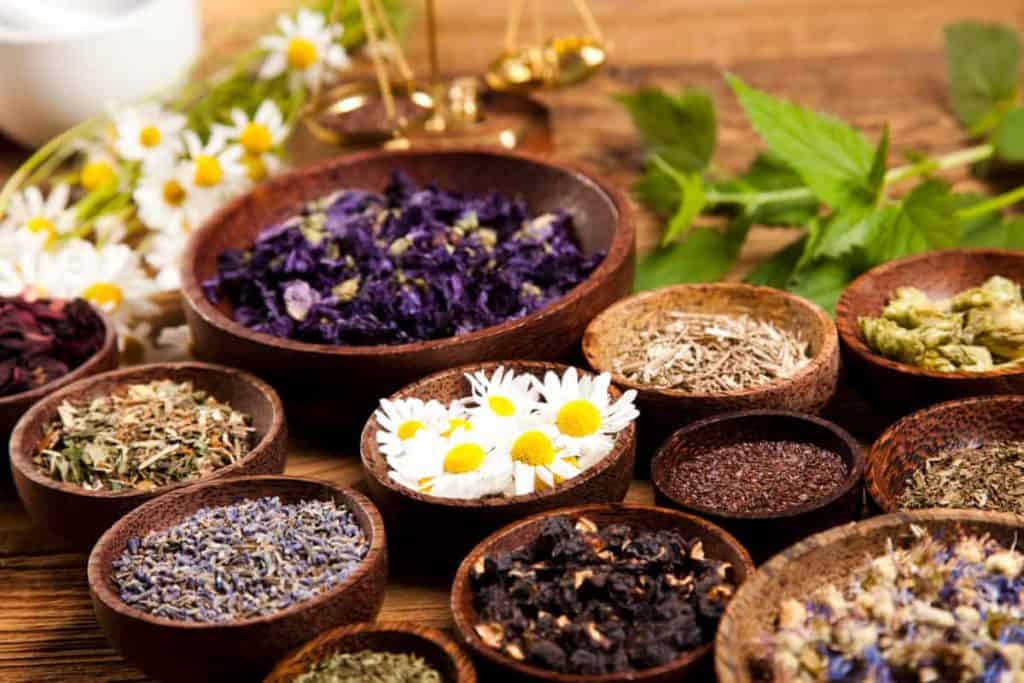
- Agrimony (Agrimonia): A member of the rose family, the leaves of the agrimony plant are used to induce sleep.
- Balm (Melissa officinalis): Sometimes called lemon balm, bee balm, or common balm, use this Mediterranean herb for its soothing effects and mild sedative properties.
- Borage (Borago officinalis): Sometimes called the “herb of gladness” as it was traditionally used to dispel sadness and lift spirits. Borage, with its cucumber-like fragrance has soothing and stress-reduction properties.
- Bergamot (Citrus bergamia): While the bergamot plant produces oranges, this citrus scent isn’t like other lively citrus fragrances. Instead, bergamot helps promote sleep by reducing stress, lowering heart rate, and has mild sedative properties.
- Catnip (Nepeta cataria): With its slightly minty fragrance, catnip acts as a mild sedative which helps to combat insomnia, or anxiety.
- Chamomile (Chamaemelum nobile): One of the most popular botanicals widely used in all manner from tea to beauty products, the delicate sweet scent of chamomile flowers provide calming, soothing, and relaxing properties. Chamomile was traditionally used as a “strewing herb” and strewn about the home during the Middle Ages to freshen up the air.
- Cloves (Syzygium aromaticum): Cloves are the dried blooms from the clove tree. While often used in baking and cooking, cloves also contain soothing properties that may help with headaches.
- Hops (Humulus lupulus): While we often associate hops with beer, the botanical creates a soothing effect on the central nervous system by easing tension and anxiety while inducing sleep. Hops pair well with valerian root to promote sleep.
- Lemon verbena (Lippia citriodora): Lemon verbena has many calming and soothing properties that help to combat insomnia. Many people enjoy lemon verbena herbal tea.
- Lavender (Lavandula officinalis or Lavandula angusstifolia): Another popular botanical coveted for its lovely scent, lavender is often used as a sleep aid as it acts as a mild sedative. The soothing properties promote a good sleep. Bonus—place dried lavender in drawers or closets to protect clothing and deter moths and repel insects.
- Marjoram, Sweet (Origanum marjorana): Sometimes used as a digestive aid, sweet marjoram may help promote regular sleep. One study explores the effects of aromatherapy using sweet marjoram on the quality of sleep of nurses working night shifts. Results showed that nurses who received both aromatherapy and massage therapy reported better quality sleep.
- Meadowsweet (Filipendula ulmaria): With a delicate almond scent, meadowsweet helps release any muscle spasms and induce a restful sleep.
- Mugwort (Artemisia vulgaris): Placing mugwort under pillow was once a common way to induce sleep. With calming and soothing properties, some claim that mugwort may promote lucid dreaming, and improve dream recall. Mugwort also makes a great moth repellent.
- Passion flower(Passiflora incarnata): The passion flower is often used to reduce anxiety and insomnia.
- Peppermint(Mentha piperita): While there are many different varieties of mint, peppermint is known for its soothing medicinal properties.
- Rose (Rosa spp.): Heritage, or “old-fashioned” roses have a stronger fragrance than modern roses. The expression, “Stop and smell the roses,” takes on new meaning when used in a dream pillow. Rose petals may lower stress, and promote regular sleep.
- Sweet woodruff(Galium odoratum): Used to soothe restlessness and agitation, sweet woodruff’s fresh grassy fragrance helps lull you into a peaceful slumber.
- Valerian (Valeriana officinalis): The root of the valerian plant has mildly sedative properties. According to the Mayo Clinic, there are some studies that show that valerian root may help you fall asleep more quickly, and provide a better overall sleep. Valerian root pairs well with hops to promote sleep.
Make fragrance last longer with fixatives
This part is completely optional, however when making a potpourri (which is essentially what you’re putting into a herb-filled dream pillow), many people use fixatives to make the scents last longer and as an all-around preservative (3).
There are two main ways to add a fixative:
- Isopropyl alcohol
- Orrisroot and salt
Isopropyl alcohol
The easiest way to apply a fixative to your DIY potpourri mixture is to pour some isopropyl alcohol (rubbing alcohol) into a spray bottle.
- Allow your dried flowers, herbs, and spices to fully dry. Blend together and let sit for at least 3 weeks to allow fragrances to mingle and set.
- Use the layering method: Lay down a layer of potpourri into a jar. Spray potpourri with rubbing alcohol, then spread another layer of potpourri. Pack into glass jars and seal tightly.
- Let this mixture rest in jars for 2–4 weeks.
Orrisroot and salt
If you don’t like the idea of using rubbing alcohol, a mixture of orrisroot and salt can be used. Orrisroot comes from the iris plant (Iris florentina).
Note: Parts of the iris plant along with orrisroot are poisonous when ingested. Keep away from children and pets.
To make a fixative, combine:
- 1 part orrisroot powder with 2 parts uniodized salt
- Combine with dried potpourri

4 recipes for dream pillows
While you can customize your favorite botanicals by combining two or more of your favorite sleepytime herbs listed above, you can also follow these tried-and-tested recipes if you prefer.
The first two herb-filled dream pillows recipes are from the handy tome, Encyclopedia of Country Living by Carla Emery.
1) To-ease-melancholy-and-put-you-to-sleep pillow
- 2 ounces (60 grams) dried rose petals
- 1 ounce (30 grams) dried mint leaves
- 1/4 (7.5 grams) ounce dried cloves, crushed
2) Headache pillow
- 2 ounces (60 grams) dried lavender
- 2 ounces (60 grams) dried marjoram
- 2 ounces (60 grams) dried rose petals
- 2 ounces (60 grams) dried betony rose leaf
- 1/2 ounce (15 grams) dried cloves
When your head is pounding, break out this headache pillow and sniff away your aches.
The next two recipes are adapted from the book, Your Indoor Herb Garden: Growing and Harvesting Herbs at Home by DJ Herda.
3) Soothing pillow
- 4 parts dried hop flowers
- 1 part lime flowers (linden) and sweet woodruff
Here’s a good recipe for a soothing slumber: Combine the sleep-inducing properties of hop flowers with a touch of sweetness from lime blossoms, and the grassy/vanilla notes of sweet woodruff.
4) Fragrant pillow
- 3 parts dried meadowsweet
- 2 parts dried rose petals
- 2 parts dried agrimony
Meadowsweet has an aromatic fragrance similar to fresh honey; when combined with the sweetness of roses and the rich fruity scent of agrimony, you’ll be induced into a blissful slumber.
How long does the fragrance in homemade dream pillows last?
Depends on the freshness of flowers when picked, the type of fabric used, etc.
Generally the scents from homemade dream pillows last up to one year.
Tip: To “freshen” up your sleep herb pillow, gently crush the pillow or sachet between your fingers to release more fragrant oils from the petals and leaves.
How to make a dream pillow
You can use any type of scrap fabric for your dream pillow, and make it any size you wish. When selecting a fabric, it’s best to use natural, breathable fabrics such as muslin or cotton.
You also want to ensure the weave of the fabric is tight enough to ensure the contents don’t spill out.
Tip: For a no-sew option, you can use a glue gun in lieu of needle and thread.
A good size to make is a 5″ X 7″ pillow.
- Cut a 6” X 15” rectangle from a fabric of your choice.
- Fold in half lengthwise and sew along the sides leaving the top open. A 1/2-inch seam provides a good start.
- Turn rightside out and fill with your dried dream pillow herbs.
- Sew pillow closed by pressing in a 1/2 inch seam.
Enjoy your new dream pillow—pleasant dreams!
👉 Find more Natural Wellness topics on nourishing your body and soul with natural food, herbs, and plants. 🌿
Would you like more timeless tips via email?
Fun tips to help you live an independent, self-sustaining lifestyle. Opt-out at any time.


References
- Chang, Y. Y., Lin, C. L., & Chang, L. Y. (2017). The Effects of Aromatherapy Massage on Sleep Quality of Nurses on Monthly Rotating Night Shifts. Evidence-based complementary and alternative medicine : eCAM, 2017, 3861273. https://doi.org/10.1155/2017/3861273. Accessed July 2021. https://www.researchgate.net/publication/318279431_The_Effects_of_Aromatherapy_Massage_on_Sleep_Quality_of_Nurses_on_Monthly_Rotating_Night_Shifts
- Mayo Clinic, Valerian: A safe and effective herbal sleep aid?, https://www.mayoclinic.org/diseases-conditions/insomnia/expert-answers/valerian/faq-20057875. Accessed July 2021.
- Emery, Carla (2012). The Encyclopedia of Country Living, 40th Anniversary Edition. Sasquatch Books. ISBN-13: 978-1-57061-840-6.
- Herda, DJ (2020). Your Indoor Herb Garden: Growing and Harvesting Herbs at Home. New Society Publishers. ISBN 9780865719330.

Author: Theresa Tesolin
Theresa is co-founder of RusticWise. She helps people unleash their inner DIY spirit by encouraging them to get dirty and make or grow something from scratch.

